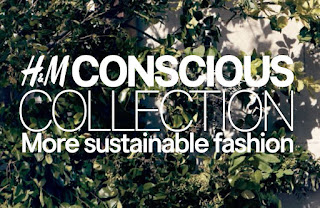A breakdown on sustainable fabrics
The other day, I was looking around at different sustainable lines like H&M Conscious and Princess Polly’s sustainable clothes. A trend I noticed with these lines is claims like “made with 50% recycled materials” or “made with at least 20% recycled materials”. If the item is labeled as sustainable and has sustainable materials, does it matter the percentage?
I wanted to look into this and see what kind of sustainable materials are out there, plus find out what’s going on with the percentages. Here’s a list of the 3 best and 3 worst materials for the environment.
THREE BEST
Organic Cotton
Organic cotton is made without pesticides or chemicals and uses a lot less water and energy to grow than regular cotton. It can be used for so many different purposes besides clothing as well. Everlane and pact are two companies that use organic cotton in their clothing.
Organic Hemp
Organic hemp is another material that makes great fabric without damaging the environment. Unlike organic cotton, though, hemp is actually carbon negative, which means it absorbs CO2 from the environment instead of producing it. Brands like Patagonia have started using hemp to make clothes, though it is more expensive. Better for the planet in terms of growth plus a little bit more.
Recycled Fabrics
Recycled fabrics like recycled polyester or cotton utilize waste to create new fabrics. Producers find old clothing or even plastic waste from the ocean to create these new materials. This is probably the best way to reuse the materials we already have instead of producing more, along with the easiest way, as we can see more brands committing to use this type of fabric in their clothing.
THREE WORST
Polyester
Polyester, polyester, polyester. The damage this material causes on the environment is ridiculous. During production, it creates so much water and air pollution, along with harmful chemicals used in the process. Every time you wash polyester, it releases microplastics that end up harming marine life. If you get rid of it, it’s not biodegradable and spends up to hundreds of years breaking down and releasing greenhouse gases. Next time you’re shopping, maybe pass on items made of polyester.
Rayon/Viscose
Rayon is a very dangerous fabric to purchase. Because it’s made from plants, companies love to promote their sustainability by using it in their clothing. However, even though it’s made from plants, the production process is horrible on the environment and factory workers with the amount of chemicals, water, and energy that’s used. Not to mention the amount of deforestation that happens in order to produce it. Probably want to avoid this fabric too.
Acrylic
Acrylic is not only bad for the environment, it can be bad for your health. An ingredient called acrylonitrile, a highly toxic chemical can enter your skin or be inhaled–imagine the conditions for factory workers. Just like polyester, it takes hundreds of years to biodegrade and releases microplastics into the water. Don’t waste your time (or jeopardize your health) to buy clothes made with this fabric.
MIXED FABRICS
Like I said above, we can see a trend of clothing brands using 50% recycled materials (give or take) in their “sustainable” clothing. This sounds great at first, and while it is, is it enough?
If you consider there’s 50% recycled materials, that means the other 50% of the item is still made with unsustainable fabrics. 50% of that material is still going to take hundreds of years to decompose and will most likely end up in a landfill emitting greenhouse gases.
Sustainable materials are much more expensive, but we know that sustainability is accessible for everyone with thrift shopping or reselling apps. Buying clothes with 100% recycled or organic materials is your best bet to buying clothes that are better for the environment. While 50% recycled materials is better than none, there’s better options for you out there, you just have to do some digging.






Comments
Post a Comment